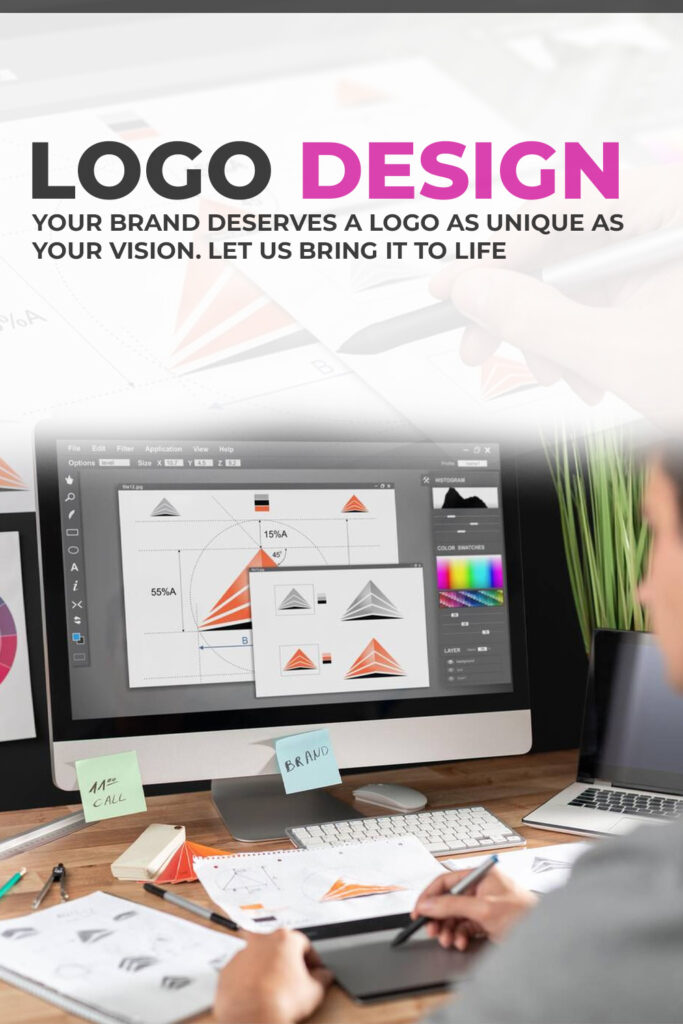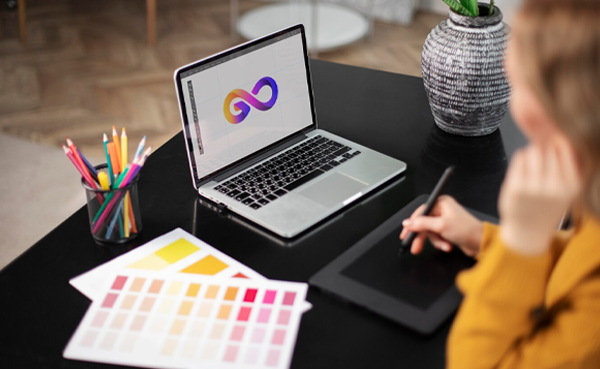Logo Legends: Creating Iconic Brands

Creating an iconic brand through logo design is both an art and a science. A well-crafted logo design company not only captures the essence of a brand but also leaves a lasting impression on its audience. In this comprehensive guide, we delve into the strategies and techniques that can help your logo stand out in a crowded marketplace. Understanding the Essence of Iconic Logos The Role of Simplicity in Design A hallmark of iconic logos is their simplicity. Simple logos are easily recognizable and memorable. Think of brands like Apple, Nike, and McDonald’s. Their logos are straightforward yet powerful. When designing a logo, focus on clean lines, minimalistic elements, and clear shapes. Avoid clutter and unnecessary details that can distract from the core message. The Power of Versatility An effective logo should be versatile. It needs to look great on a variety of mediums and sizes, from business cards to billboards. Versatility ensures that your logo maintains its integrity and impact regardless of where it’s displayed. Consider creating versions of your logo that work in both color and black-and-white, as well as in different sizes. Timelessness Over Trends While it’s tempting to follow design trends, an iconic logo should stand the test of time. Timeless logos avoid gimmicks and focus on enduring design principles. Look at brands like Coca-Cola and IBM; their logos have remained largely unchanged for decades. Strive for a design that won’t feel outdated in a few years. Key Elements of Iconic Logo Design Color Psychology in Logo Design Color plays a crucial role in logo design. Different colors evoke different emotions and associations. For instance, blue is often associated with trust and professionalism, while red can evoke excitement and passion. Choose colors that align with your brand’s personality and message. Additionally, ensure your color choices are appropriate for your target audience and industry. Typography Matters The typeface you choose for your logo communicates a lot about your brand. Serif fonts can convey tradition and reliability, while sans-serif fonts are often seen as modern and clean. Typography should be legible and appropriate for your brand’s tone. Custom typefaces can add a unique touch to your logo, making it truly one-of-a-kind. Incorporating Symbols and Icons Symbols and icons can enhance a logo by adding an extra layer of meaning. When selecting or designing symbols, ensure they are relevant to your brand and easily recognizable. Symbols should complement the text and not overpower it. The combination of text and icon should work harmoniously to create a cohesive logo. The Logo Design Process Research and Inspiration Before you start designing, immerse yourself in research. Study your competitors, understand your target audience, and gather inspiration from successful logos. Research helps you identify what works in your industry and what sets your brand apart. Sketching and Conceptualizing Begin the design process with sketches. Sketching allows you to explore a wide range of ideas quickly. Don’t worry about perfection at this stage; focus on getting your concepts on paper. Once you have several strong ideas, refine them and start considering how they will look in a digital format. Digital Creation and Refinement Using design software, bring your best sketches to life. Experiment with different fonts, colors, and layouts. Refinement is key—take the time to tweak and adjust your design until it’s perfect. Get feedback from others and be willing to make changes based on constructive criticism. Testing Across Mediums Before finalizing your logo, test it across various mediums. Print it out, view it on different screens, and see how it looks in both small and large sizes. Testing ensures your logo maintains its impact and clarity in all contexts. Case Studies of Iconic Logos Apple: The Evolution of Simplicity Apple’s logo is a prime example of simplicity and versatility. Over the years, it has evolved from a complex illustration to the sleek, iconic apple shape we recognize today. The logo’s minimalistic design reflects Apple’s commitment to user-friendly, cutting-edge technology. Nike: The Power of Symbolism Nike’s “Swoosh” is one of the most recognizable logos in the world. It’s a perfect example of how a simple symbol can carry significant meaning. The swoosh represents movement and speed, perfectly aligning with Nike’s brand identity. The logo’s adaptability across products and marketing materials showcases its versatility. Coca-Cola: Timeless and Consistent Coca-Cola’s logo has undergone minor tweaks over the years, but its core design has remained consistent. The flowing script and distinctive red color embody the brand’s heritage and global recognition. Coca-Cola’s commitment to maintaining its iconic logo underscores the importance of timeless design. Conclusion: Crafting Your Iconic Logo Creating an iconic logo requires a deep understanding of design principles, brand identity, and market trends. By focusing on simplicity, versatility, and timelessness, you can craft a logo that not only stands out but also endures. Remember to invest in thorough research, embrace creativity, and refine your design through testing. An iconic logo is a powerful asset that can elevate your brand and leave a lasting impression on your audience.
The Language of Logos: Decoding Trends in Brand Identity Design

In today’s competitive market, a strong brand identity is crucial for standing out from the crowd. Central to this identity is the logo design services USA, which serves as the visual representation of a brand’s values, mission, and personality. In this article, we’ll explore the language of logos, deciphering the trends and strategies that define effective brand identity design. Understanding the Importance of Logos A logo is more than just a graphic; it’s a symbol that embodies the essence of a brand. It’s often the first point of contact between a company and its audience, making it a vital element of branding. A well-designed logo can evoke emotions, convey messages, and leave a lasting impression on consumers. Evolution of Logos Logos have come a long way since their inception. From simple monograms and heraldic symbols to modern, minimalist designs, logos have evolved to reflect changing design trends and cultural shifts. Today, logos are not just static images but dynamic assets that adapt to various digital platforms and mediums. Elements of Effective Logo Design Effective logo design involves careful consideration of various elements, including shape, color, typography, and symbolism. Each element plays a crucial role in conveying the brand’s identity and resonating with its target audience. A successful logo strikes a balance between creativity and functionality, capturing the essence of the brand while remaining versatile and memorable. Current Trends in Brand Identity Design In the ever-evolving landscape of design, certain trends have emerged as dominant forces in brand identity design. These include minimalist designs, bold typography, geometric shapes, and responsive logos. Brands are also embracing unique color palettes and experimental layouts to differentiate themselves in crowded markets. The Impact of Color Psychology in Logos Color plays a significant role in shaping consumer perceptions and emotions. Different colors evoke different feelings and associations, making color selection a crucial aspect of logo design. From calming blues to energetic reds, each color choice conveys a specific message and can influence consumer behavior. Typography and Fonts in Logo Design Typography is another essential element of logo design, as it determines the readability and personality of the logo. Brands often choose fonts that reflect their identity, whether it’s elegant serif fonts for luxury brands or bold sans-serif fonts for modern startups. The right typography can enhance brand recognition and create a cohesive visual identity. Minimalism vs. Complex Logos In recent years, minimalist logos have gained popularity for their clean, timeless aesthetic. However, complex logos still have their place, especially for brands looking to convey multiple messages or convey intricate details. The key is finding the right balance between simplicity and complexity to ensure that the logo remains versatile and scalable. Incorporating Symbolism and Metaphors Many logos incorporate symbolism and metaphors to convey deeper meanings and connect with audiences on a subconscious level. Whether it’s hidden symbols, clever wordplay, or cultural references, these elements add layers of meaning to the logo and spark curiosity among consumers. Responsive Logos for Digital Platforms With the rise of digital media, brands need logos that can adapt to various screen sizes and resolutions. Responsive logos, which scale and rearrange elements based on the device, ensure consistent branding across websites, social media profiles, and mobile apps. By prioritizing adaptability, brands can maintain brand recognition in today’s digital-first world. Case Studies: Successful Logo Designs Examining successful logo designs can provide valuable insights into what works and what doesn’t in brand identity design. Case studies of iconic logos, such as Nike, Apple, and Coca-Cola, showcase the power of simplicity, consistency, and innovation in creating memorable brand identities. Tips for Creating Memorable Logos Creating a memorable logo requires creativity, research, and attention to detail. Some key tips include conducting thorough market research, understanding the target audience, keeping the design simple yet distinctive, and ensuring scalability and versatility across different applications. Conclusion In conclusion, the language of logos is a complex and ever-evolving field that requires a deep understanding of design principles, consumer psychology, and brand strategy. By staying informed about current trends, leveraging timeless design principles, and embracing innovation, brands can create logos that resonate with their audience and stand the test of time.
